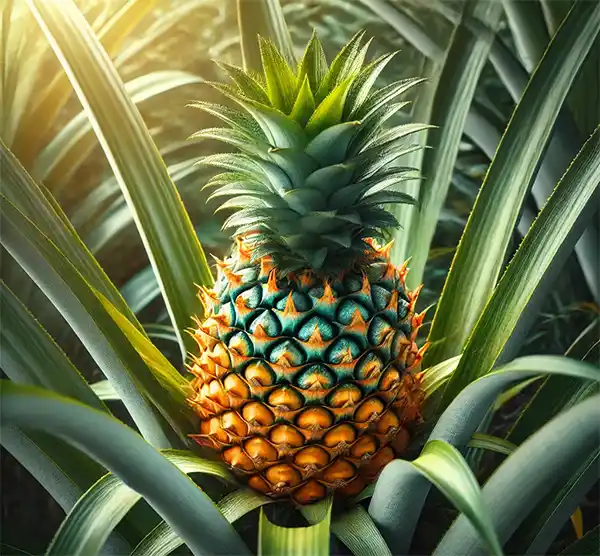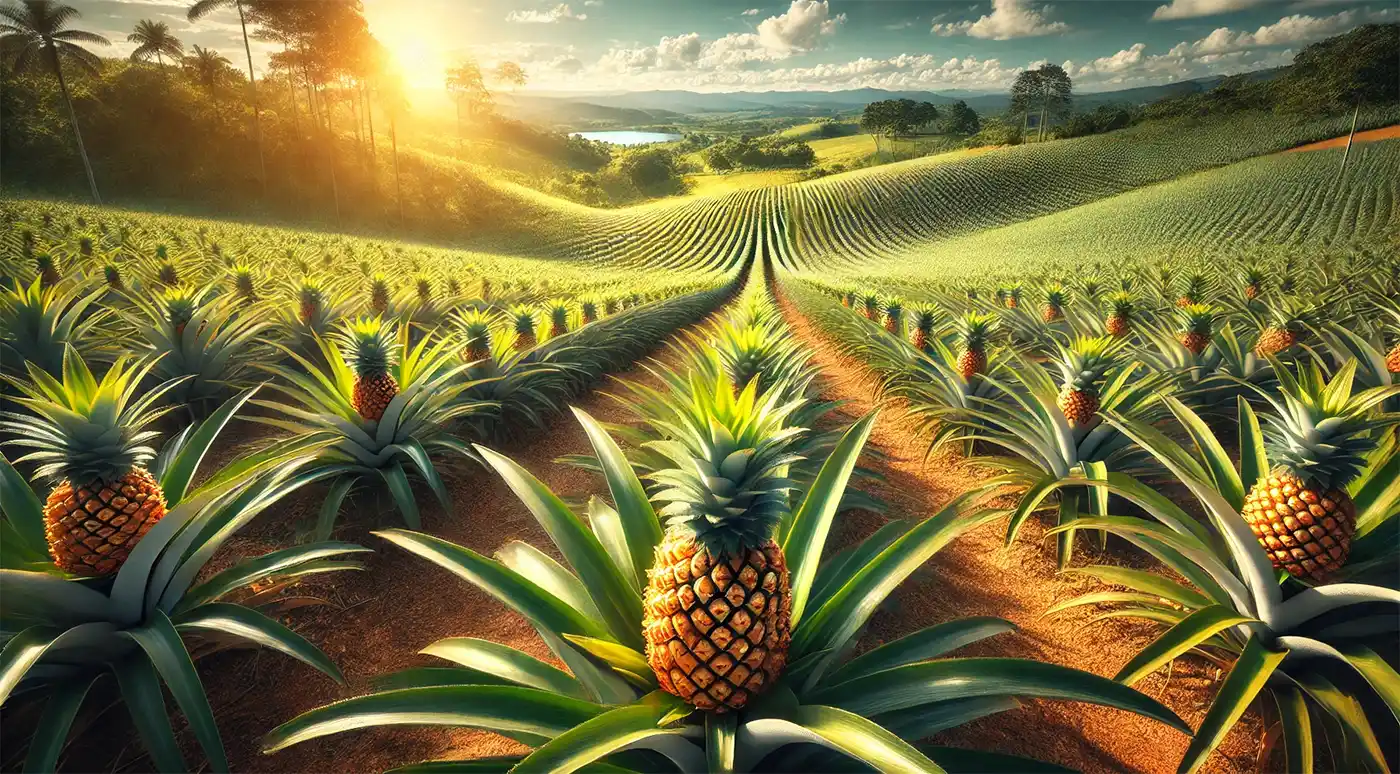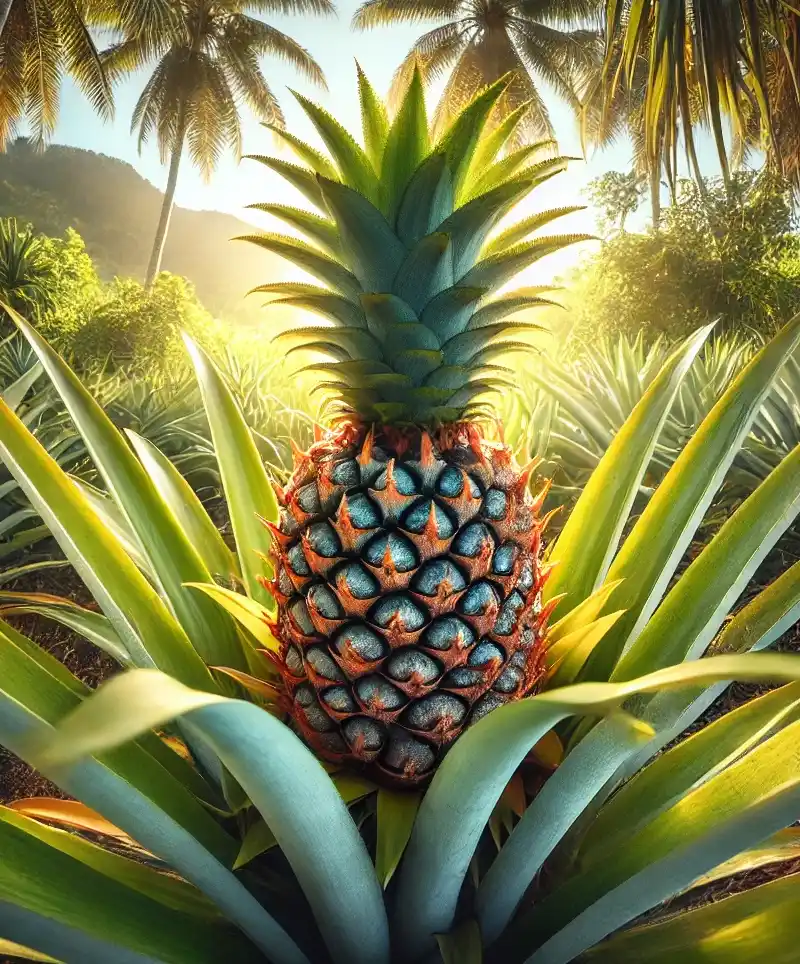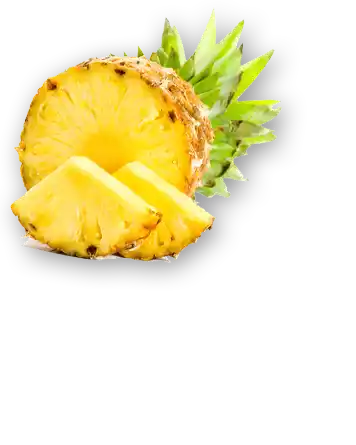A Spiky Celebration of Sweetness
Pineapple Day, celebrated annually on June 27th, is a tropical love letter to one of the most iconic fruits ever to grace our kitchens, cocktails, and questionable pizza debates. This celebration isn’t just about the pineapple’s sugary goodness; it’s a nod to its historical, botanical, and culinary brilliance. Strap in (or maybe peel back), because we’re diving deep into the world of pineapples—with plenty of laughs along the way.
A Brief History of Pineapples
The story of the pineapple (Ananas comosus) begins in the lush, tropical regions of South America, where it was first cultivated by indigenous tribes in what is now Paraguay and southern Brazil. These early pineapple pioneers didn’t just stumble upon a tasty snack—they recognized the fruit’s potential as both a food source and a cultural symbol. Its sweetness, juiciness, and unique appearance made it a treasured part of their diet and traditions.
 The pineapple’s journey beyond South America began as it spread throughout Central America and the Caribbean, where it became a staple crop. It was here that Christopher Columbus encountered the pineapple during his second voyage to the New World in 1493. Legend has it that he was so captivated by this prickly fruit—describing it as “resembling a pine cone, yet tasting sweeter than sugar”—that he brought it back to Europe. Little did he know, he was setting the stage for the pineapple to become the ultimate symbol of status and luxury.
The pineapple’s journey beyond South America began as it spread throughout Central America and the Caribbean, where it became a staple crop. It was here that Christopher Columbus encountered the pineapple during his second voyage to the New World in 1493. Legend has it that he was so captivated by this prickly fruit—describing it as “resembling a pine cone, yet tasting sweeter than sugar”—that he brought it back to Europe. Little did he know, he was setting the stage for the pineapple to become the ultimate symbol of status and luxury.
In Europe, the pineapple quickly earned a reputation as an exotic delicacy. However, growing them in the chilly European climate was no easy task. Wealthy nobles constructed elaborate greenhouses, known as "pineries," just to cultivate this tropical fruit. The effort and cost were so immense that pineapples became rarer than a good parking spot in downtown Manhattan. It wasn’t uncommon for aristocrats to rent pineapples as party centerpieces to impress their guests. That’s right—people rented pineapples. They didn’t eat them; they simply displayed them as proof of their affluence and impeccable taste. Pineapple, the original flex.
The fruit’s popularity didn’t end with European nobility. By the 18th century, pineapples had made their way to Hawaii, thanks to Spanish explorers and later American settlers. The fertile volcanic soil and warm climate of the islands were perfect for growing pineapples, and soon, Hawaii became synonymous with the fruit. Pineapples became a major industry in the early 20th century, thanks in large part to the efforts of James Dole—whose name is still inseparable from the fruit today. Known as the "Pineapple King," Dole established vast plantations in Hawaii and introduced canned pineapple to the world, making it more accessible to the average consumer.
Meanwhile, the pineapple's role as a cultural icon flourished. In colonial America, it became a symbol of hospitality, often placed at the entrance of homes to welcome visitors. This practice originated from the Caribbean, where pineapples were offered to guests as a sign of warmth and friendship.
Fast forward to modern times, and the pineapple remains a beloved fruit with a global presence. It’s celebrated not only for its delicious flavor but also for its versatility, from juices and desserts to savory dishes and cocktails. And let's not forget its unmistakable charm as a design motif, gracing everything from tropical-themed shirts to kitchen decor.
The pineapple’s history is one of exploration, innovation, and cultural significance. From its humble beginnings in the jungles of South America to its status as a worldwide symbol of hospitality and tropical delight, the pineapple has earned its rightful place as a fruit worth celebrating.
Nature’s Architectural Masterpiece
Pineapples aren’t just fruits—they’re botanical show-offs. Each pineapple is a collection of individual berries (fruitlets) fused together around a central core. Think of it as nature’s version of teamwork, except tastier and without the awkward trust falls.
The crown at the top is more than a fancy hairdo; it’s essential for photosynthesis and can even be used to grow a new pineapple. Yes, that means you could plant a pineapple crown and play farmer—though you’ll need patience, as pineapples grow slower than your Wi-Fi on a bad day. Those "eyes" on the surface? They’re not just decorative—they’re the remnants of the individual flowers, each contributing to the fruit’s quirky, spiky charm.
Culinary Uses for Pineapples
Few fruits are as versatile as the pineapple. It’s the multi-tasker of the culinary world—equally at home in desserts, drinks, and even main courses.
- Fresh and Fabulous: A fresh slice of pineapple is like a tropical party in your mouth. Sweet, juicy, and packed with tangy goodness, it’s the snack that screams summer.
- Pineapple Upside-Down Cake: This dessert is the showstopper of retro potlucks. The caramelized pineapple rings on top turn even the dullest of cakes into a sugary masterpiece. Pro tip: The cake should be the only thing flipping upside down—steady hands, folks!
- Piña Coladas: If you like getting caught in the rain, you’ll love sipping on this tropical cocktail. Pineapple juice, coconut cream, and rum—it’s basically a vacation in a glass.
- Savory Surprises: Pineapple’s natural sweetness pairs beautifully with savory dishes. From Hawaiian pizza (don’t start a fight) to sweet and sour chicken, it’s proof that opposites attract.
- Grilled Pineapple: Toss pineapple rings on the grill, and you’ve got a smoky-sweet side dish or dessert that’s bound to steal the spotlight at your barbecue.
Sweet Truths to Savor
- Hospitality with a Twist: In colonial America, a pineapple at your doorstep wasn’t a random fruit delivery; it was a sign of hospitality. Today, we use welcome mats, but honestly, pineapples seem way more fun.
- Slow and Steady Wins the Race: Pineapples take a whopping 18-24 months to grow just one fruit. No wonder they taste like victory—it’s the reward for a very long wait.
- Royal Roots: Pineapples were once so rare and valuable that King Charles II posed for a portrait holding one. It’s safe to say pineapples were the Birkin bags of their day.
- Health Hero: Packed with bromelain, pineapples help with digestion and inflammation. Basically, they’re like a spa day for your insides. Pineapple juice: the OG detox cleanse.

Add Some Sweetness to Your Day
Pineapple Day isn’t just a holiday—it’s an excuse to go full tropical mode. Here’s how to celebrate this spiky superstar:
- Host a Pineapple-Themed Bash
Deck your space in pineapple decor, serve up pineapple-inspired dishes, and invite your most fun-loving friends. Bonus points for wearing a pineapple costume—it’s both hilarious and oddly fashionable.
- Get Crafty
Turn pineapples into art! Whether it’s carving them into funky designs or using them as a stamp for prints, pineapples can be your muse. Just don’t forget to eat the leftovers.
- Settle the Pizza Debate
Host a Hawaiian pizza taste test. Invite your pro- and anti-pineapple friends, then sit back and watch the drama unfold. It’s the fruit that keeps on giving.
- Go Farm-to-Fork
Try growing your own pineapple from a crown. It’s like a science experiment, except tastier and without the need for safety goggles.
The Pineapple Effect
Pineapples are more than just a fruit—they’re a vibe. They’ve traveled the world, graced royal tables, and sparked culinary creativity for centuries. On Pineapple Day, take a moment to appreciate this spiky, sweet treasure. Slice it, grill it, or bake it into something amazing. Whatever you do, let the pineapple remind you to embrace life’s sweetness—even if it’s hidden behind a tough exterior. And remember, when life gives you pineapples, make a Piña Colada. Cheers!
Please Share our Content






 The pineapple’s journey beyond South America began as it spread throughout Central America and the Caribbean, where it became a staple crop. It was here that Christopher Columbus encountered the pineapple during his second voyage to the New World in 1493. Legend has it that he was so captivated by this prickly fruit—describing it as “resembling a pine cone, yet tasting sweeter than sugar”—that he brought it back to Europe. Little did he know, he was setting the stage for the pineapple to become the ultimate symbol of status and luxury.
The pineapple’s journey beyond South America began as it spread throughout Central America and the Caribbean, where it became a staple crop. It was here that Christopher Columbus encountered the pineapple during his second voyage to the New World in 1493. Legend has it that he was so captivated by this prickly fruit—describing it as “resembling a pine cone, yet tasting sweeter than sugar”—that he brought it back to Europe. Little did he know, he was setting the stage for the pineapple to become the ultimate symbol of status and luxury.









 "Sláinte!" is a traditional Irish expression used as a toast, equivalent to "Cheers!" in English.
"Sláinte!" is a traditional Irish expression used as a toast, equivalent to "Cheers!" in English.